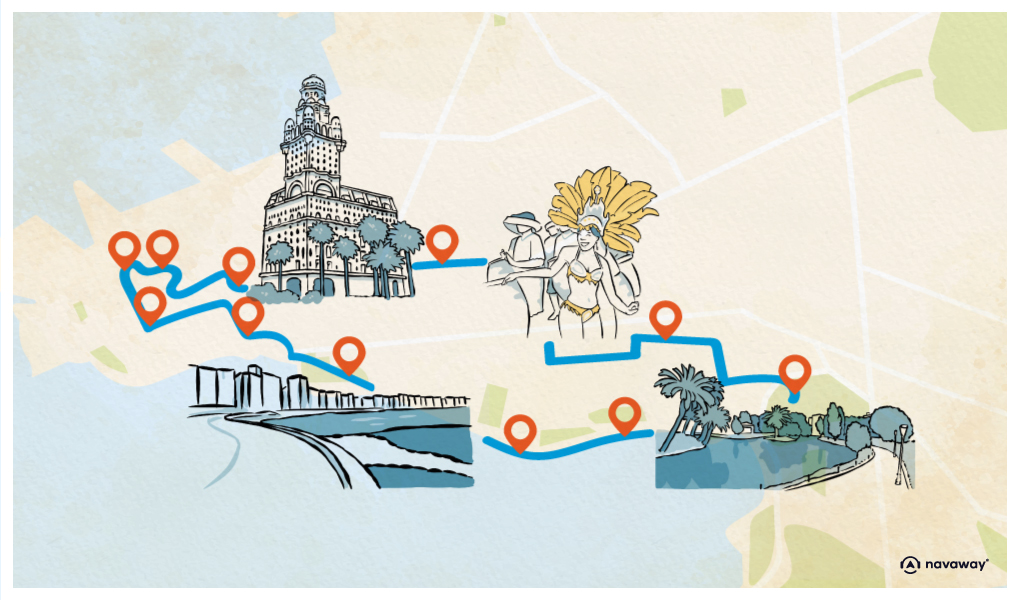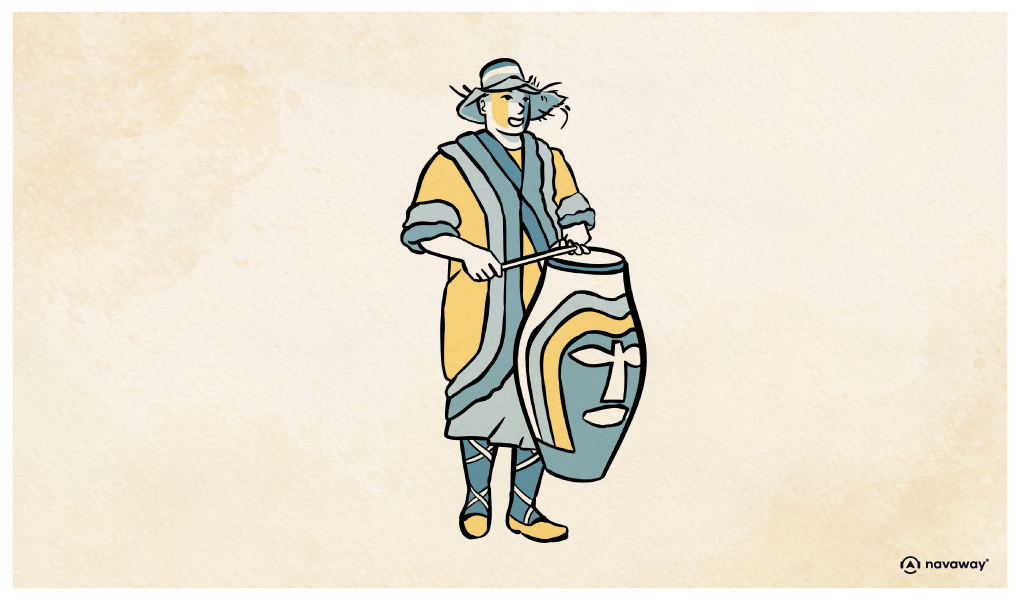
Carnival in Uruguay

This point of interest is available as audio on the tour: Visit Montevideo, The Sixth Mountain From East to West
Isla de Flores Street, which you’re walking up now, might seem like just another quiet residential street lined with traditional Montevideo homes. But when Carnival season arrives, it transforms into something magical, the stage for las llamadas. Carnival is one of Uruguay’s most powerful and beloved traditions. Las llamadas, which means “the calls”, are parades that summon people to join the great celebration of the people. At the heart of it all is candombe, an intensely local Afro-Uruguayan drum rhythm with deep historical roots, dating back to the days of slavery. Later, during Uruguay’s military dictatorship, candombe became a form of resistance. The regime demolished the conventillos, social housing in Black neighbourhoods where candombe communities had long lived, which ended up spreading the culture all across Montevideo. Today, candombe is recognised by UNESCO as part of the Intangible Cultural Heritage of Humanity. It’s still a symbol of the struggle for equality for Afro-descendants, even though it’s now embraced across all social classes, including much of the white middle class. Candombe is uniquely Uruguayan. It’s built on the rhythm of three drums: the chico, the smallest; the repique, which improvises and breaks the rhythm; and the piano, the largest, which lays down the deep bass. In the lead-up to Carnival, you’ll often see drummers in historic Black neighbourhoods like Palermo, Cordón, or Barrio Sur, where you are now, warming the skins of their drums over open fires to prepare for the parades. Each neighbourhood has its own comparsa, a drum troupe, that rehearses all year for this big event, when they finally parade down Isla de Flores Street. They’re joined by dancers in feathered, brightly colored costumes, flag bearers, and towering papier-mâché giants. The whole performance echoes the lived experience of enslaved people. The musicians wear sandals and black stockings, with ribbons that represent the whip marks left on their ancestors. Their short, syncopated steps mimic the restricted movements of chained men. As UNESCO notes, “Candombe is not only a form of resistance, but a musical and social gathering deeply rooted in the daily life of these neighbourhoods.”


Discover Montevideo with app
An interactive guide through the most beautiful streets, squares, and districts
19 fun audioguides full of historical facts, anecdotes, and legends





Comments